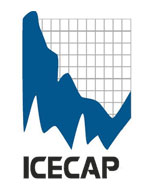DEMOCRATS WAVER ON CAP AND TRADE BILL
By Jennifer A. Dlouhy, Houston Chronicle, 13 May 2009
WASHINGTON - Democratic leaders pushing to cap greenhouse gas emissions were working Wednesday to appease key lawmakers who want to ease the financial burden that the climate change plan would impose on consumers and refiners.
Rep. Henry Waxman, D-Calif., who plans to formally introduce his climate change bill today, said that he expects a new compromise deal will have enough votes on his 59-member House Energy and Commerce Committee to be approved by the panel next week. But Waxman spent much of Wednesday huddling with wavering Democratic lawmakers on the panel to shore up support for the measure. The skeptics included Texas Democrats Gene Green and Charlie Gonzalez, who want concessions for refiners in the Lone Star State, and Rep. G.K. Butterfield, D-N.C., who wants tax relief for low-income households to defray expected higher energy costs.
The cornerstone of the bill is a plan to cap carbon dioxide emissions blamed for contributing to global warming. Under the compromise, greenhouse gas emissions would be capped at 17 percent below 2005 levels in 2020 - a looser standard than the 20 percent reduction Waxman had originally sought. That proposed cap is more rigorous than the 14 percent goal President Barack Obama has sought or the 6 percent target advocated by some committee Democrats.
To exceed the limits, power plants, refiners, manufacturers and other industries would have to buy emissions allowances on a new carbon market. But after weeks of negotiations, committee Democrats have agreed to give away 35 percent of the allowances to electric utilities, 15 percent to trade-sensitive industries such as timber and steel manufacturing and a small number to the auto industry.
Still undecided was the question of how many allowances should be given to refiners, with the final number likely to rest between 1 percent and 5 percent.
Green, the unofficial leader of a group of oil-patch Democrats on the Energy and Commerce Committee, was pushing the higher number. He said he wanted to vote for a bill that limits CO2 emissions, “but does it in a way that is reasonable.” “There’s some flexibility” in the allowance allocation, Green said, “but 1 percent is not in the ballpark.”
After meeting with Waxman and Rep. Ed Markey, D-Mass., Gonzalez said he was “feeling really good” that he would get enough concessions for refiners and would vote for the legislation. Other committee Democrats were less optimistic. Rep. Bart Stupak, D-Mich., said he would vote against the legislation without significant changes, including tightened regulation of the new carbon allowance market he said is open to “manipulation.” Butterfield said he was concerned that with more than half of emissions allowances given away for free, the revenue from the remaining sold permits wouldn’t be enough to steer tax relief to low-income consumers. “We’re closer today than we were a week ago,” Butterfield said. “But I’m still not prepared to vote for a bill.”
The wavering Democrats have numbers on their side. With all 23 committee Republicans expected to vote “no” on the legislation, Waxman has had to search for support among the panel’s 36 Democrats. If as few as seven of them vote against the bill, it could die in committee, dealing a major blow to one of Obama’s top priorities. Read story here.
============
REPUBLICANS PUSH CHANGES TO U.S. CLIMATE BILL
By Richard Cowan, The Washington Post, 13 May 2009
WASHINGTON (Reuters) - Republicans in the U.S. House of Representatives on Wednesday vowed to push for major changes to a climate change bill that could move through a key committee next week, including a proposal to count nuclear power as a clean energy alternative.
The House Energy and Commerce Committee will try by the end of next week to put its finishing touches on one of the most significant environmental initiatives in decades. If the Democratic-controlled committee can meet that self-imposed deadline, the full House could vote and probably pass it by early August. The bill’s future in the Senate is less certain.
Representative Joe Barton, the senior Republican on the House panel, predicted he would prevail with an amendment to include nuclear power and “clean coal” as alternative sources of energy that will have to be used more by electric utilities under the bill.
See full story here.
============
GREEN PRESSURE: CAP-AND-TRADE BILLIONS SHOULD GO TO POOR NATIONS
By Lisa Lerer, Politico, May 13, 2009
A loose coalition of international aid organizations, religious groups, environmental advocates and some businesses are lobbying Congress to include billions for international aid in the forthcoming climate change bill.
The groups argue that helping developing countries cut greenhouse gases and protect against the effects of global warming is a key to success at the international climate talks scheduled for December in Copenhagen.
“The U.S. can’t go completely empty-handed to Copenhagen,” said Oxfam America President Raymond Offenheiser. Read more here
H/T CCNET. CCNet is a scholarly electronic network edited by Benny Peiser. To subscribe, send an e-mail to listserver@ljmu.ac.uk ("subscribe CCNetMedia").
See what little impact the bill will have on our climate (0.05C by 2050) here. With costs to an average American family of $1,600-2,200 per year according to a Congressional Budget Office study and as much as $3,100 per year in an MIT study, a lot of pain for no gain.
Senator John Barrasso (R-Wyo.) today exposed a “smoking gun” White House memo to the Environmental Protection Agency (EPA). The memo warns that regulation of small CO2 emitters will have “serious economic consequences” for businesses and the overall economy.
Barrasso produced the memo while questioning EPA Administrator Lisa Jackson during the Senate Environment and Public Works Committee budget hearing. “I received a memo this morning, that’s marked ‘Deliberative: Attorney-Client Privilege’. In this memo Counsel for the White House repeatedly, repeatedly suggests a lack of scientific support for this proposed finding. This is a smoking gun, saying that your findings were political and not scientific”, Barrasso said.
The EPA has failed to release the memo and has ignored the advice. The nine-page White House memo undermines the EPA’s reasoning for a proposed finding that greenhouse gases are a danger to public health. “This misuse of the Clean Air Act will be a trigger for overwhelming regulation and lawsuits based on gases emitted from cars, schools, hospitals and small business. This will affect any number of other sources, including lawn mowers, snowmobiles and farms. This will be a disaster for the small businesses that drive America,” Barrasso said.
See larger youtube here.
Quoting from the memo to the EPA, Barrasso said that, “making the decision to regulate carbon dioxide under the Clean Air Act for the first time is likely to have serious economic consequences for regulated entities throughout the US economy, including small businesses and small communities.” The memo is an amalgamation of findings from government agencies’ sent from the Office of Management and Budget to the EPA. “This smoking gun memo is in stark contrast to the official position presented by the Administration and the EPA Administrator,” Barrasso said.
Despite the findings in the memo, the White House has given the EPA the green light to move ahead with regulation under the Clean Air Act. According to government records, the document was submitted by the OMB as comment on the EPA’s April proposed finding that greenhouse gases are a danger to public health and welfare. The memo - marked as “Deliberative-Attorney Client Privilege” - doesn’t have a date or a named author. But an OMB spokesman confirmed to news agencies that it was prepared by Obama administration staff.
BACKGROUND
The White House brief questions the link between the EPA’s scientific technical endangerment proposal and the EPA’s political summary. Administrator Jackson said in the endangerment summary that “scientific findings in totality point to compelling evidence of human-induced climate change, and that serious risks and potential impacts to public health and welfare have been clearly identified.”
The White House memo notes, the EPA endangerment technical document points out there are several areas where essential behaviors of greenhouse gases are “not well determined” and “not well understood.” It warns about the adequacy of the EPA finding that the gases are a harm to the public when there is “no demonstrated direct health effects,” and the scientific data on which the agency relies are “almost exclusively from non-EPA sources.” The memo contends that the endangerment finding, if finalized by the administration, could make agencies vulnerable to litigation alleging inadequate environmental permitting reviews, adding that the proposal could unintentionally trigger a cascade of regulations.
See Press Release here and Memo here.
See follow-up stories in the New York Times, Wall Street Journal, St. Louis Post Dispatch, istockanalyst and the National Review online. h/t Benny Peiser
By Ian Talley, Wall Street Journal
New federal greenhouse gas emission regulation could expose a raft of smaller emitters to litigation, a nominee for a key post in the Environmental Protection Agency told lawmakers Thursday.
The potential for smaller emitters to be regulated under the Clean Air Act is one reason why business groups warn that EPA regulation of greenhouse gases could create a cascade of legal and regulatory challenges across a much broader array of sectors. The Obama administration has said that isn’t their intent.
Regina McCarthy, nominated to be EPA’s Director of Air and Radiation, told lawmakers that even while the government has flexibility in setting the threshold of emitting facilities to be regulated, she acknowledges the risk of lawsuits to challenge those levels for smaller emitters. Ms. McCarthy’s office is responsible for drafting federal emission rules.
Sen. John Barrasso (R., Wyo.) has put a hold on Ms. McCarthy’s nomination in part because of her responses on the greenhouse gas issue.
Under the Obama administration, the EPA is moving forward to declare greenhouse gas emissions a danger to public health and welfare, which will trigger new rules once finalized. The EPA says that only around 13,000 of the largest emitters, such as refiners, smelters and cement plants would likely be regulated.
Many legal experts say that based on clear Clean Air Act statutes, however, regulations could be applied to any facility that emits more than 100-250 tons a year, including hospitals, schools and farms. Taken in aggregate, farm animals are major greenhouse gas sources because of methane and nitrous oxide emissions from flatulence, belching and manure. Buildings often emit greenhouse gases from internal heating or cooling units.
“It is a myth - EPA will regulate cows, Dunkin Donuts, Pizza Huts, your lawnmower and baby bottles,” EPA Administrator Lisa Jackson said earlier this year, dismissing concerns raised by groups such as the Chamber and the National Association of Manufacturers.
But in responses to a senator’s questioning, Ms. McCarthy acknowledged that legal suits could be brought against small emitters.
Asked how she would protect smaller sources against suits, Ms. McCarthy said she would talk with the litigants: “I will request that I be informed if any such notice is filed with regards to a small source, and I will follow-up with the potential litigants.”
Bill Kovacs, the head of environment and regulatory affairs at the U.S. Chamber of Commerce said, “There’s no way she can talk to the litigants and control them.” By the Chamber’s estimate, there are 1.5 million facilities—such as large office buildings that have their own boilers—that produce over the 250-ton limit.
Kassie Siegel, director of the Center for Biological Diversity’s Climate Law Institute, says her group is prepared to sue for regulation of smaller emitters if the EPA stops at simply large emitters. See more here.


